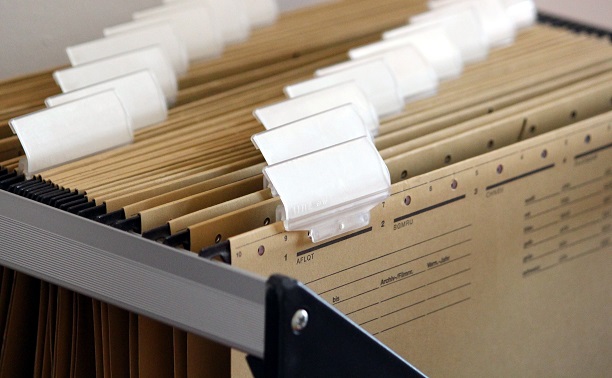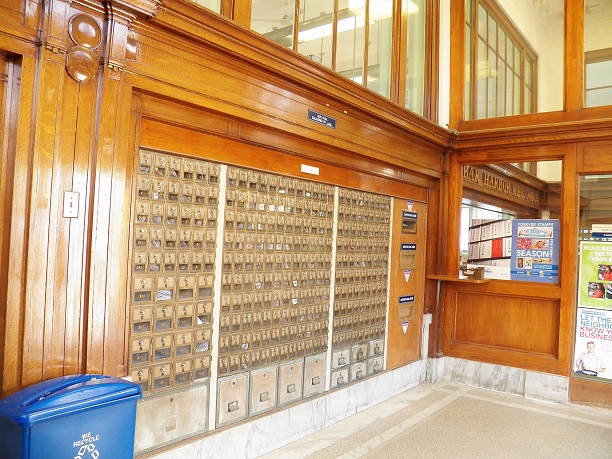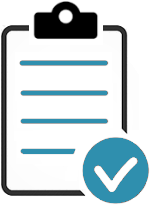Documented information is defined by ISO 14001 as information required to be controlled and maintained by an organization, as well as the medium in which it is contained.
‘Documented information' in ISO 14001:2015 has replaced the terms ‘documented procedure’ and ‘record’ used in ISO 14001:2004.
Contents
You should ensure that you organization’s EMS includes documented information required to be maintained and retained by ISO 14001:2015, and the documented information identified by your organization to demonstrate the effective operation of its EMS.
It should be noted that there is no need to maintain a documented procedure but your organization may still choose to operate one.
Our Documented Information Procedure is proven to work.

The organization needs to determine the level of documented information necessary to control its EMS.
‘Access’ can imply a decision regarding the permission to view the documented information only, or the permission and authority to view and change the documented information.
Documented information can be in any format and media and from any source.

You should seek to confirm:
Our Documented Information Procedure is proven to work.
All external documents need to be handled in a similar fashion where control is concerned. The viewing and handling of documents should be access controlled.

A robust document control process invariably lies at the heart of any compliant management system; almost every aspect of auditing and compliance verification is determined through the scrutiny of documented information. With this in mind, it becomes apparent that the on-going maintenance of an efficient document management system must not be overlooked.
Your organization must control the documented information required by the EMS.
A suitable process must be implemented to define the controls needed to:
The documented information process should define the scope, purpose, method and responsibilities required to implement these parameters.
In order to comply with the documented information requirements, it is essential that all personnel understand what types of information that should be controlled and more importantly, how this control should be exercised.
To get the most out of your documented information process, it must communicate to ensure that staff and other users of the documentation information understand what they must do in order to manage that information effectively and efficiently.
Departmental managers should always be responsible for promoting good documented information practices in their area whilst supporting overall compliance to the requirements.
Individuals and their line managers should be responsible for the information that they create, as well as being responsible for their retention and disposal in line with legislative requirements and organizational needs.
Our Documented Information Procedure is proven to work.
We suggest that you maintain and retain the following ‘documented information’:
| Clause | Documentation Requirement |
| 4.3 | The scope of the EMS is maintained as documented information and available to interested parties. |
| 5.2 | The environmental policy is maintained as documented information |
| 6.1.1 | Maintain documented information relating to; (a) risks and opportunities that need to be addressed, and (b) processes needed in Section 6 to the extent necessary to have confidence they are carried out as planned. |
| 6.1.2 | Maintain documented information relating to; (a) environmental aspects and associated environmental impacts, (b) criteria used to determine significant environmental aspects, and (3) significant environmental aspects. |
| 6.1.3 | Maintain documented information concerning compliance obligations. |
| 6.2.1 | Maintain documented information on the environmental objectives. |
| 7.2 | Retain appropriate documented information as evidence of competence. |
| 7.4.1 | Retain documented information as evidence of communication, as appropriate. |
| 7.5.1 | The EMS must include: (a) documented information required by 14001:2015, and (b) documented information determined by the organization as being necessary for the effectiveness of the EMS. |
| 8.1 | Maintain documented information to the extent necessary to have confidence that processes have been carried out as planned. |
| 8.2 | Maintain documented information to the extent necessary to have confidence that processes are carried out as planned. |
| 9.1.1 | Retain appropriate documented information as evidence of the monitoring, measurement, analysis and evaluation results. |
| 9.1.2 | Retain documented information as evidence of the compliance evaluation result(s) |
| 9.2.2 | Retain documented information as evidence of the implementation of the audit programme and the audit results. |
| 9.3 | Retain documented information as evidence of the results of management reviews. |
| 10.2 | Retain documented information as evidence of: (a) the nature of the non-conformities and any subsequent action taken, and (b) the results of any corrective action. |
We suggest the following retention periods for your retained EMS documented information:
| Document Type | Suggested Retention Period |
| Management review minutes | 2 Years |
| Internal and external audit reports | 5 Years |
| Environmental monitoring and inspection records | 5 Years |
| Legal and compliance records and registers | 10 Years |
| Environmental aspects and impact registers | 10 Years |
| Emergency preparedness plans and records of drills | 10 Years |
| Environmental incident records | 10 Years |
| Risk and opportunity assessments and/or registers | 10 Years |
| Business plans | 5 Years |
| Swot analysis records | 5 Years |
| Pestle analysis records | 5 Years |
| Corrective action reports | 5 Years |
| Complaint records | 2 Years |
| Nonconformance reports | 5 Years |
| Design review records | 5 Years |
| Training and competence records | 10 Years |
| Calibration results and certificates | 5 Years |
All of the ISO 14001 clauses are fully-documented and explained in our Environmental Management System Template (EMS).
We have procedures, templates, checklists, process maps, forms and gap analysis tools to help your documentation without missing a single input or output.
Before you invest all the hours reinventing the wheel, before you spend countless dollars outsourcing the task — try our templates.
Updated: 26th February 2022
Author: Richard Keen

Richard is our Compliance Director, responsible for content & product development.
But most importantly he is ISO's biggest fanboy and a true evangelist of the standards.
Learn more about Richard

Don’t Try to Manage It All Alone!
Our ISO Auditors and Quality Manager Trainers have been in this industry for years, and since 2002 we’ve been providing thousands of small businesses and large corporations with the tools they need to get certified.
Instead of trying to create everything you need to follow this process from scratch, use ours. We have procedures, templates, checklists, process maps, forms and gap analysis tools to help you control your documented information without missing a single input or output.
Before you invest all the hours reinventing the wheel, before you spend countless dollars outsourcing the task — try our templates.
| QMS ISO 9001 |
EMS ISO 14001 |
OH&S ISO 45001 |
|
|
Documented Information Procedure - view sample The purpose of this procedure is to ensure that all relevant documented information and organizational knowledge which forms an integral part of our quality management system is managed under controlled conditions and that all documented information is reviewed and approved by authorized personnel prior to issue. Forms & Reports also included:
>> Free Download - Control of Calibrated Equipment Procedure - this will give you a good idea of what to expect when you purchase the procedure. |
$19 USD |
$19 USD |
$29 USD
|
|
Documented Information Template
|
$39 USD |
Pay by Credit Card, Debit Card, PayPal or Apple Pay.


|
Please read our Money Back Guarantee. |
Bought by Small Businesses and Large Corporations our templates have been sold online and CD since 2002.
Used by:
The Templates are used by first-timers following our step-by-step, clause-by-clause guidance documents; and experienced Quality Managers wishing to streamline and improve their existing documentation.
The application of our templates is scalable and generic; regardless of the size and type of organization. The elements that form the quality management system are the same.
1. Our customizable templates save you time and money by offering a streamlined process to create your quality documentation
2. They’ve got everything you need in one simple template
3. Proven to work our templates have helped thousands of businesses big and small achieve certification
4. Documents use styles to make reformatting and rebranding a breeze
5. Our templates are generalizable for any industry or sector. The application of our templates is scalable and generic; regardless of the size and type of organization.